Lettuce
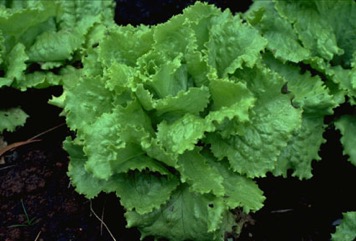
A temperate plant. Plants are grown throughout the country of Papua New Guinea but particularly in the highlands and mainly for sale. It grows best between 700-2,350 m above sea level in PNG. Leafy forms are used in cooking in many parts of Asia. It suits hardiness zones 6-11.
Also known as:
Alface, Alfase, Chisa, Daun salad, Lechuga, Lekuke, Letesi, Letisi, Letsugas, Marul, Salad-pata, Salad, Saladi, Sangchu, Selada, Shang ts'oi, Sheng Cai, Sung chi, Sung choi, Vrtna solata, Woh sun
Synonyms
- Lactuca capitata (L.) DC.
- Lactuca crispa (L.) Roth
- Lactuca palmata Willd.
- Lactuca sativa subsp. asparagina
- Lactuca sativa subsp. capitata (L.) Chubl. & G. Martens
- Lactuca scariola var. sativa C.B. Clarke
Edible Portion
- Leaves, Seeds, Vegetable
Where does Lettuce grow?
Found in: Africa, Albania, Amazon, Angola, Argentina, Asia, Australia, Austria, Bangladesh, Benin, Botswana, Bougainville, Brazil, Bulgaria, Burkina Faso, Burundi, Cambodia, Cameroon, Caucasus, Central Africa, Central African Republic, CAR, Central America, Chad, Chile, China, Colombia, Comoros, Congo, Cook Islands, Costa Rica, Côte d'Ivoire, Cuba, Dominican Republic, East Africa, East Timor, Egypt, Equatorial-Guinea, Eritrea, Ethiopia, Europe, Fiji, Finland, France, Gabon, Gambia, Georgia, Ghana, Greece, Guinea, Guinée, Guinea-Bissau, Guyana, Haiti, Hawaii, India, Indochina, Italy, Indochina, Indonesia, Ivory Coast, Jamaica, Japan, Kenya, Kiribati, Korea, Kyrgyzstan, Liberia, Macedonia, Madagascar, Malawi, Mali, Marquesas, Mauritania, Mauritius, Mediterranean, Mexico, Mongolia, Morocco, Mozambique, Myanmar, Namibia, Nepal, New Caledonia, Niger, Nigeria, North Africa, North America, Pacific, Papua New Guinea, PNG, Philippines, Puerto Rico, Rotuma, Rwanda, Saudi Arabia, Scandinavia, SE Asia, Senegal, Serbia, Seychelles, Sierra Leone, Singapore, Slovenia, Solomon Islands, Somalia, South Africa, Southern Africa, South America, Spain, Sri Lanka, St. Vincent and Grenadines, Sudan, Switzerland, Tanzania, Tasmania, Thailand, Timor-Leste, Togo, Tonga, Turkey, Tuvalu, Uganda, Uruguay, United States, Vanuatu, Vietnam, West Africa, West Indies, Zambia, Zimbabwe
Notes: It is rich in minerals like sodium, phosphorus, calcium, magnesium and vitamins. There are about 20 Lactuca species.
Status: It has social significance to affluent people in Papua New Guinea. It is mostly grown for sale in highland areas of Papua New Guinea. It is the most important salad vegetable in European countries.
Growing Lettuce
Cultivation: Plants are grown from seeds and often transplanted. Seedlings are transplanted after 30-35 days and spaced 45 cm apart. Seeds need to be sown very shallowly. In hot places lettuce develops a bitter taste if transplanted or checked in their growth. Cutting the tap root can stop plants seeding quickly.
Edible Uses: Eaten raw or in soups. The sprouted seeds can be used in salads or sandwiches. Leaves can be dried and stored. The leaves are used for sarma in Turkey. They are rolled around a filling of rice or minced meat.
Production: Leafy varieties are harvested after 50-60 days.
Nutrition Info
per 100g edible portion| Edible Part | Energy (kcal) | Protein (g) | Iron (mg) | Vitamin A (ug) | Vitamin c (mg) | Zinc (mg) | % Water |
|---|---|---|---|---|---|---|---|
| Leaves | 20 | 1.2 | 0.7 | 180 | 15 | 0.2 | 94 |
Lettuce Photos

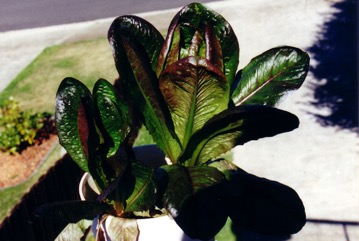
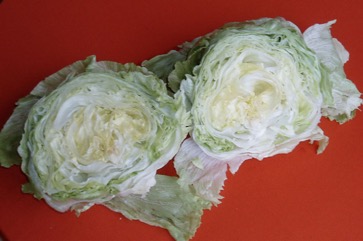
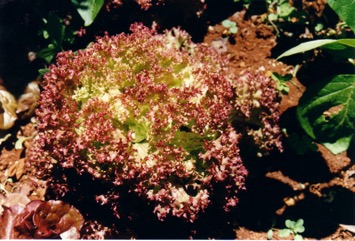
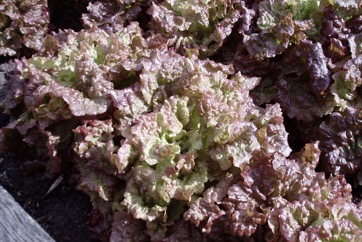
References
Ambasta, S.P. (Ed.), 2000, The Useful Plants of India. CSIR India. p 312
Anderson, E. F., 1993, Plants and people of the Golden Triangle. Dioscorides Press. p 214
Ara, R. I. T., 2015, Leafy Vegetables in Bangladesh. Photon eBooks. p 142
Arellanes, Y., et al, 2013, Influence of traditional markets on plant management in the Tehuacan Valley. Journal of Ethnobiology and Ethnomedicine 9:38
Bernholt, H. et al, 2009, Plant species richness and diversity in urban and peri-urban gardens of Niamey, Niger. Agroforestry Systems 77:159-179
Bianchini, F., Corbetta, F., and Pistoia, M., 1975, Fruits of the Earth. Cassell. p 50
Bodkin, F., 1991, Encyclopedia Botanica. Cornstalk publishing, p 613
Bourke, R. M., Altitudinal limits of 230 economic crop species in Papua New Guinea. Terra australis 32.
Bremness, L., 1994, Herbs. Collins Eyewitness Handbooks. Harper Collins. p 255
Brouk, B., 1975, Plants Consumed by Man. Academic Press, London. p 113
Burkill, I.H., 1966, A Dictionary of the Economic Products of the Malay Peninsula. Ministry of Agriculture and Cooperatives, Kuala Lumpur, Malaysia. Vol 2 (I-Z) p 1316
Bussman, R. W., et al, 2016, A comparative ethnobotany of Khevsureti, Samtskhe-Javakheti, Tusheti, Svaneti, and Racha-Lechkhumi, Republic of Georgia (Sakartvelo), Caucasus. Journal of Ethnobiology and Ethnomedicine (2016) 12:4
Bussman, R. W. et al, 2017, Ethnobotany of Samtskhe-Javakheti, Sakartvelo (Republic of Georgia), Caucasus. Indian Journal of Traditional Knowledge Vol. 16(1) pp 7-24
Cheifetz, A., (ed), 1999, 500 popular vegetables, herbs, fruits and nuts for Australian Gardeners. Random House p 71
Chin, H. F., 1999, Malaysian Vegetables in Colour. Tropical Press. p 19
Curtis, W.M., 1963, The Students Flora of Tasmania Vol 2 p 388
Dogan, Y., et al, 2015, Of the importance of a leaf: the ethnobotany of sarma in Turkey and the Balkans. Journal of Ethnobiology and Ethnomedicine, 11:56
Facciola, S., 1998, Cornucopia 2: a Source Book of Edible Plants. Kampong Publications, p 40
Foo, J.T.S.(ed), 1996, A Guide to Common Vegetables. Singapore Science Foundation. p 26
French, B.R., 1986, Food Plants of Papua New Guinea, A Compendium. Asia Pacific Science Foundation p 140
French, B.R., 2010, Food Plants of Solomon Islands. A Compendium. Food Plants International Inc. p 159
Furusawa, T., et al, 2014, Interaction between forest biodiversity and people's used of forest resources in Roviana, Solomon Islands: implications for biocultural conservation under socioeconomic changes. Journal of Ethnobiology and Ethnomedicine, 10:10
Grubben, G. J. H. and Denton, O. A. (eds), 2004, Plant Resources of Tropical Africa 2. Vegetables. PROTA, Wageningen, Netherlands. p 349
Grubben, G.J.H., 2004. Lactuca sativa L. [Internet] Record from Protabase. Grubben, G.J.H. & Denton, O.A. (Editors). PROTA (Plant Resources of Tropical Africa), Wageningen, Netherlands. < http://database.prota.org/search.htm>. Accessed 16 October 2009.
Hadfield, J., 2001, The A-Z of Vegetable Gardening in South Africa. Struik p 109
Herklots, G. A. C., 1972, Vegetables in South-East Asia. Allen & Unwin. p 132
Hossain, U. & Rahman, A., 2018, Study and quantitative analysis of wild vegetable floral diversity available in Barisal district, Bangladesh. Asian J. Med. Biol. Res. 2018, 4 (4), 362-371
http://www.botanic-gardens-ljubljana.com/en/plants
Hu, Shiu-ying, 2005, Food Plants of China. The Chinese University Press. p 739
Jardin, C., 1970, List of Foods Used In Africa, FAO Nutrition Information Document Series No 2.p 85
Kapelle, M., et al, 2000, Useful plants within a Campesino Community in a Costa Rican Montane Cloud Forest. Mountain Research and Development, 20(2): 162-171.
Katz, E., et al, 2012, No greens in the forest? Note on the limited consumption of greens in the Amazon. Acta Soc Bot Pol 81(4):283–293
Kiple, K.F. & Ornelas, K.C., (eds), 2000, The Cambridge World History of Food. CUP p 1801
Lazarides, M. & Hince, B., 1993, Handbook of Economic Plants of Australia, CSIRO. p 143
Macmillan, H.F. (Revised Barlow, H.S., et al), 1991, Tropical Planting and Gardening. Sixth edition. Malayan Nature Society. Kuala Lumpur. p 364
Martin, F.W. & Ruberte, R.M., 1979, Edible Leaves of the Tropics. Antillian College Press, Mayaguez, Puerto Rico. p 123
Miguel, E., et al, 1989, A checklist of the cultivated plants of Cuba. Kulturpflanze 37. 1989, 211-357
Omawale, 1973, Guyana's edible plants. Guyana University, Georgetown p 96
Oomen, H.A.P.C., & Grubben, G.J.H., 1978, Tropical Leaf Vegetables in Human Nutrition, Communication 69, Department of Agricultural research, RTI Amsterdam, p 91
Phon, P., 2000, Plants used in Cambodia. © Pauline Dy Phon, Phnom Penh, Cambodia. p 393
Plants for a Future database, The Field, Penpol, Lostwithiel, Cornwall, PL22 0NG, UK. http://www.scs.leeds.ac.uk/pfaf/
Plants of Haiti Smithsonian Institute http://botany.si.edu
Purseglove, J.W., 1968, Tropical Crops Dicotyledons, Longmans. p 74
Rashid, H. E., 1977, Geography of Bangladesh. Westview. p 276
Rosero-Toro, et al, 2018, Cultural significance of the flora of a tropical dry forest in the Doche vereda (Villavieja, Huila, Colombia). Journal of Ethnobiology and Ethnomedicine (2018) 14:22 p 11
Ryder, E. J. & Whitaker, T.W., 1979, Lettuce, in Simmonds N.W.,(ed), Crop Plant Evolution. Longmans. London. p 39
Salako, V. K. et al, 2013, Home gardens: an assessment of their biodiversity and potential contribution to conservation of threatened species and crop wild relatives in Benin. Genet Resour Crop Evol
Shah, S. K., 2014, Dietary contribution of underutilized minor crops and indigenous plants collected from uncultivated lands and forests in Nepal. in Promotion of Underutilized Indigenous Food Resources for Food Security and Nutrition in Asia and Pacific. FAO. Bangkok p 64
Sharma, B. B., 2005, Growing fruits and vegetables. Publications Division. Ministry of Information and broadcasting. India. p 216
Small, E., 2009, Top 100 Food Plants. The world's most important culinary crops. NRC Research Press. p 318
Sp. pl. 2:795. 1753 (type species)
Terra, G.J.A., 1973, Tropical Vegetables. Communication 54e Royal Tropical Institute, Amsterdam, p 54
Thaman, R.R., 1976, The Tongan Agricultural System, University of the South Pacific, Suva, Fiji. p 408
Thaman, R. R, 2016, The flora of Tuvalu. Atoll Research Bulletin No. 611. Smithsonian Institute p 68
Tindall, H.D., & Williams, J.T., 1977, Tropical Vegetables and their Genetic Resources, International Board for Plant Genetic Resources, Rome, p 103
Tindall, H.D., 1983, Vegetables in the tropics. Macmillan p. 89
van Wyk, B., 2005, Food Plants of the World. An illustrated guide. Timber press. p 222
Vickery, M.L. and Vickery, B., 1979, Plant Products of Tropical Africa, Macmillan. p 49
Walter, A. & Lebot, V., 2007, Gardens of Oceania. ACIAR Monograph No. 122. p 269
Williamson, J., 2005, Useful Plants of Malawi. 3rd. Edition. Mdadzi Book Trust. p 147
World Checklist of Useful Plant Species 2020. Royal Botanic Gardens, Kew